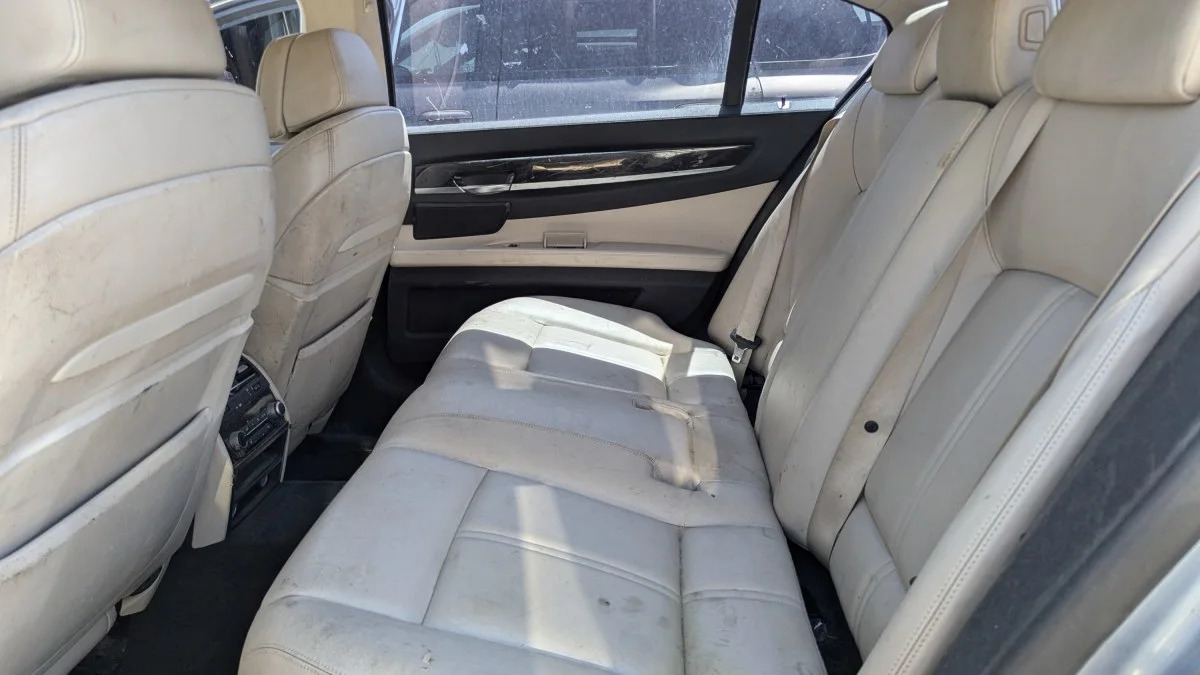Junkyard Gem: 2012 BMW ActiveHybrid 750Li

The first mass-produced gasoline-electric hybrid vehicle sold in the United States was the 2000 Honda Insight, followed a year later by the Toyota Prius. Some manufacturers were quicker to develop (or license) hybrid technology than others, and BMW first got into that game here with a hybridized 7 Series: the ActiveHybrid 7, which debuted as a 2011 model. Here’s an example of one of those extremely rare beasts, found in a Denver self-service boneyard recently.
I’ve been making an effort to document the first decade or so of U.S.-market hybrids by seeking them out during my junkyard travels, and I’ve manage to unearth discarded examples of such evolutionary-dead-end hybrid rarities as a 2008 Nissan Altima Hybrid, a 2007 Saturn Vue Green Line and a 2013 Volkswagen Jetta Hybrid. Those seldom-seen cars are a dime a dozen next to a V8-powered BMW ActiveHybrid 7, though.

From the time of the Active7’s American introduction in late 2010 through the first nine months of 2012, total sales came to exactly 657 cars. The Blue Water Metallic paint, which is worn by today’s Junkyard Gem, was available only on the ActiveHybrid 7.

For the 2013 model year, the ActiveHybrid 7 lost the big 4.4-liter V8 and switched to the 4.0-liter straight-six from the 740i. Why?

BMW’s marketers pitched the 750i/750Li ActiveHybrids in a much different manner than did their rivals, with the brochure of the 2012 model proclaiming, “Forget everything you previously thought about hybrids: that they are slow, unexciting vehicles that sacrifice performance, space and luxury in the name of frugality.” And they weren’t kidding; this car was a factory hot rod that used its electric motor to boost overall power to 455 horsepower and 515 pound-feet.

The problem was that fuel economy wasn’t much improved over that of the non-hybrid 750s. This car was rated at 17 miles per gallon in the city and 24 on the highway, versus 14 and 22 mpg for the ordinary 750Li.

For that drop-in-the-bucket fuel savings, the ActiveHybrid 750Li had a list price of $101,100 (about $139,994 in 2024 dollars). Meanwhile, the non-hybrid 750Li for 2012 had an MSRP of $88,200 ($122,252 after inflation). Perhaps the HYBRID text in the badges bestowed owners a tiny dollop of greenness onto their public image, but this is a BMW 7 Series we’re talking about.

So, a very luxurious, very powerful, very thirsty luxury sedan that reeked of greenwashing to those who fought for reduced carbon emissions yet cost tens of thousands more than its all-gasoline sibling. No wonder so few were sold!

The six-banger ActiveHybrid 7s for 2013 got much better mileage: 22 miles per gallon city, 30 miles per gallon highway. That didn’t get it anywhere near Prius territory, but was still respectable for a car that scaled in at nearly 5,000 pounds.

Why is it in such a place at age 12? With just 657 V8-powered ActiveHybrid 7s sold in the entire country, replacement parts for anything involving the hybrid powertrain much have been terrifyingly expensive, if they were even available at all. Once one of those components failed, the journey for this car to the nearest Pick Your Part was a short one.
The road to the future? Perhaps not.



